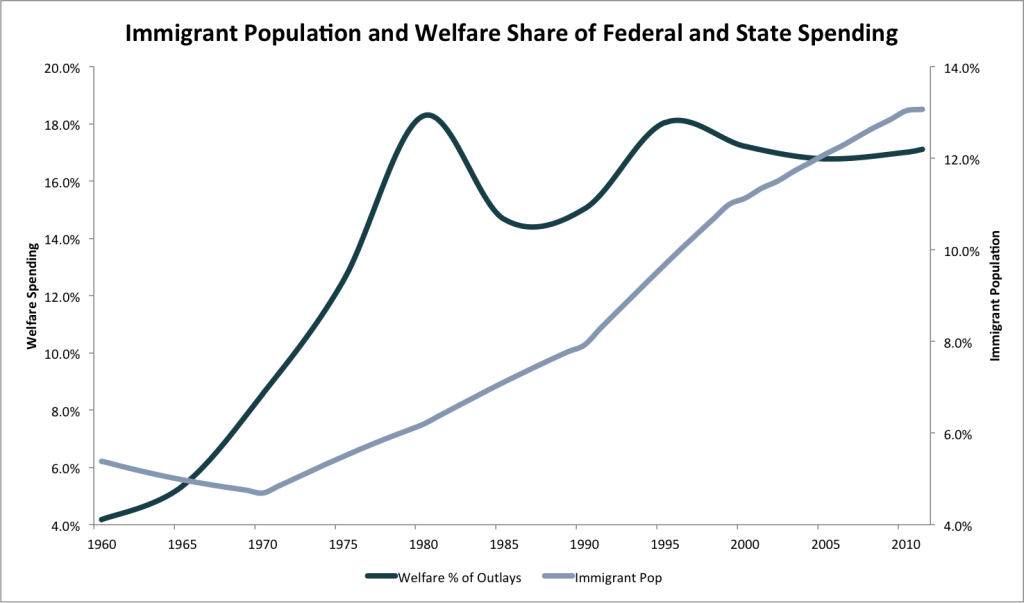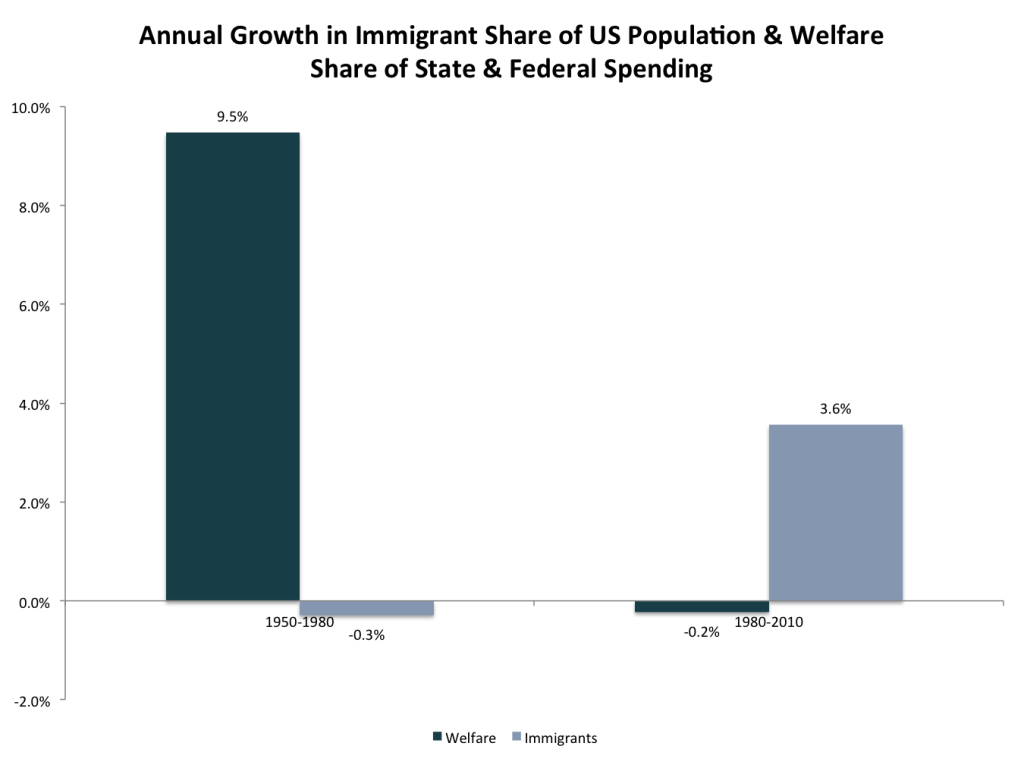Immigrants don’t abuse the welfare state. Poor immigrants receive fewer welfare benefits than poor natives. Overall, immigrants have a neutral effect on federal budgets. But let’s imagine for a moment that immigrants do use “too much” welfare, as many people believe. There are at least two ways this might affect welfare spending, if it were the case.
Many people worry that immigrants come to the United State seeking welfare. According to this common line of reasoning, once immigrants get here, they will vote or otherwise agitate for more generous benefits. If it turns out the typical immigrant voter supports increased welfare spending more than the typical native voter, overall support for expanding welfare will increase. Therefore, as immigration grows, we ought to expect politicians to respond to this shift in public opinion by making welfare programs more of a priority.
However, this is exactly the opposite of what has happened since the 1980s. As the immigrant population grew, governments stopped the growth of welfare as a share of government spending. The welfare state did continue to grow in absolute terms (like every other aspect of government), but it’s clear that state and federal governments deprioritized welfare spending growth relative to other spending initiatives as the immigrant population grew.
What explains this? One possibility is that, true or not, a widespread belief that immigrants abuse the welfare system may actually lead politicians to deprioritize welfare-spending, shrinking the welfare state relative to what it would have been with less immigration.
The following chart presents the Heritage Foundation’s estimate of state and federal means-tested public benefits (“welfare”) as a share of their total spending (available here) and compares it to the Census’s estimates of the immigrant population. As you can see, immigrant population growth is negatively correlated with welfare growth as a share of government spending—strongly so since 1980.*
Here are the growth rates for the pre-1980 period and the post-1980 period.
This correlation ought not to be surprising for two reasons. First, according to a recent Cato Institute report analyzing General Social Survey data, immigrants don’t differ much from non-immigrant American views on specific policy questions, including how big the welfare state should be. If they aren’t significantly different than Americans, they likely won’t shift policy priorities among policymakers.
Second, immigrants may indirectly undermine support for welfare among native-born Americans. Many scholars, including Vernon Briggs, a noted anti-immigration labor economist, and Paul Krugman, a Nobel-laureate liberal economist, believe that the modern welfare state might not have developed at all if immigration hadn’t been restricted dramatically in the 1920s. Krugman makes two arguments to this effect. In his words:
The New Deal made America a vastly better place, yet it probably wouldn’t have been possible without the immigration restrictions that went into effect after World War I. For one thing, absent those restrictions, there would have been many claims, justified or not, about people flocking to America to take advantage of welfare programs.
And:
[O]pen immigration meant that many of America’s worst-paid workers weren’t citizens and couldn’t vote. Once immigration restrictions were in place, and immigrants already here gained citizenship, this disenfranchised class at the bottom shrank rapidly, helping to create the political conditions for a stronger social safety net.
It is hardly a coincidence that the annual immigration rate was at its lowest point during the 1930s, when the New Deal was implemented, or that the foreign-born resident population was at its lowest point in the 1960s, when LBJ’s Great Society was enacted.
There little evidence that immigration is driving an explosion in welfare spending. On the contrary, the balance of evidence suggests that high rates of immigration have historically acted as check on the growth of welfare state.

